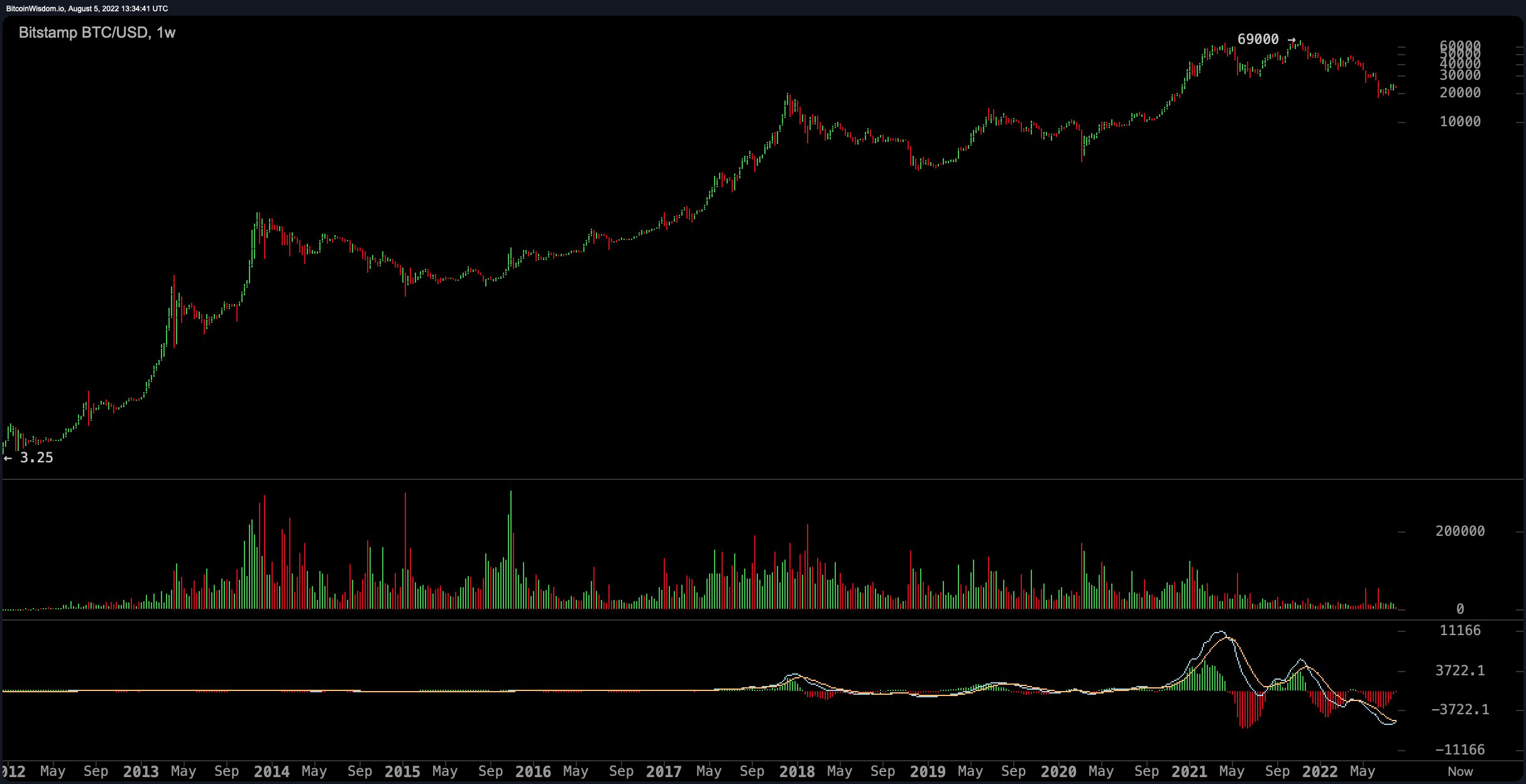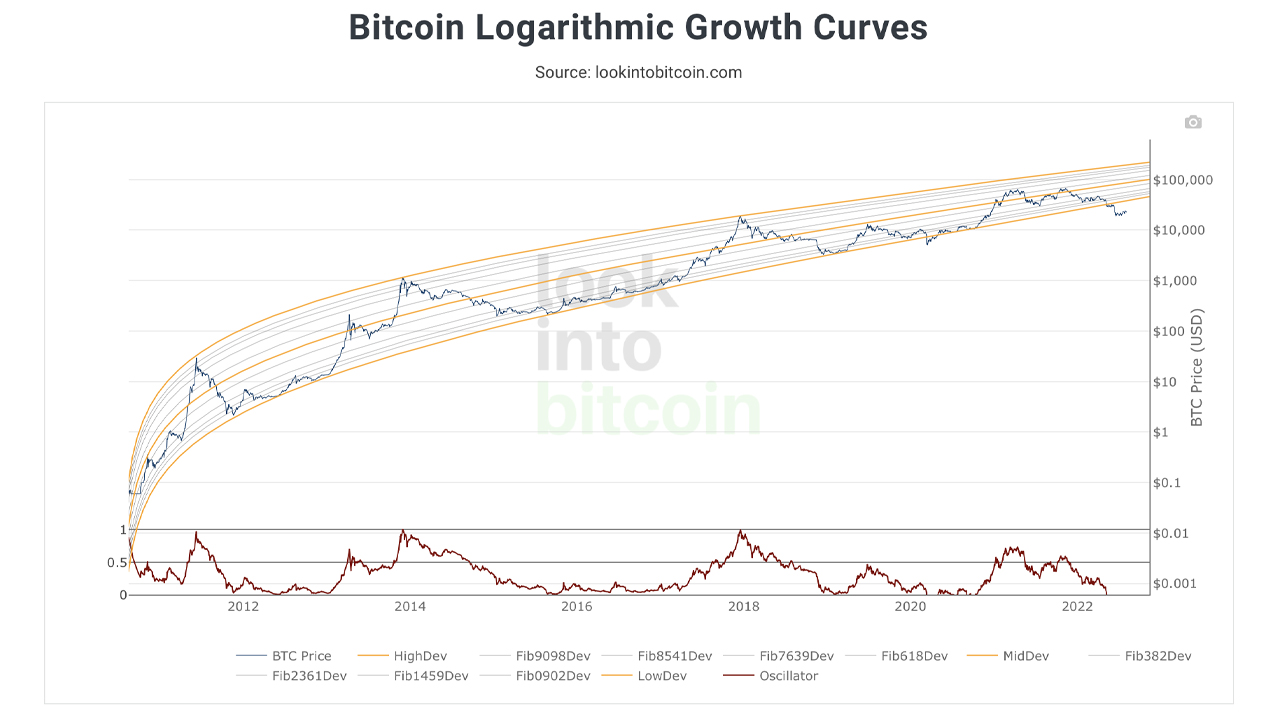Tags in this story
Bitcoin’s 2022 Bear Market Has Ruined the Community’s Most Popular Pricing Models – Featured Bitcoin News


The 2022 bear market has been brutal as more than $2 trillion in value has been wiped from the crypto economy. In addition to losing record values, the crypto winter has managed to break a number of popular bitcoin price models such as the rainbow price chart and Plan B’s infamous stock-to-float model. Moreover, since May 11, 2022, the well-known power-law corridor model or logarithmic growth curve chart has also broken, and it has deviated below the lower band for about 86 days.
A deviation from the norm: 2022’s Bitcoin Bear Market breaks some of the most popular price patterns
For many years now, crypto traders have leveraged tools, charts and models to predict the future value of bitcoin (BTC) and other popular digital assets. Bitcoin.com News has written about Plan B’s stock-to-flow (S2F) pricing model on many occasions, and in 2021, the S2F model was quite accurate until the end of November.
In addition, many bitcoiners rely on other charts and price models such as the golden ratio multiplier, the Fibonacci sequence, the rainbow model, and logarithmic growth curves. During the last quarter of 2021, bitcoin traders expected BTC to reach $100K per coin by the end of the year.

In September 2021, when BTC traded for prices between $45K and $50K, the lead insights analyst at Blockware Solutions, Will Clemente, tweeted about a new price model he called the “Illiquid Supply Floor.” At the time, Clemente said the model combined Glassnode’s illiquid supply data with Plan B’s S2F model and said it created a bitcoin price floor based on BTC’s real-time scarcity.
The floor value Clemente predicted was $39K, and as time went on the analyst’s Illiquid Supply Floor model broke. Even after Plan B’s S2F “worst-case scenario” prediction diverged in late November, the pseudonymous analyst said he was confident bitcoin’s price was still “heading toward $100K.”
None of these bold predictions came to fruition, and right at the start of the crypto bear market, these types of pricing models became openly mocked and condemned by many people in the crypto community. The Illiquid Supply Floor was not solid, S2F broke, and people made fun of the popular “Rainbow” price indicator.
I have created a new and improved model for the rainbow map pic.twitter.com/zgjbqQtOb1
— LevelsDennis.lens (@levelsdennis) 19 June 2022
The popular power law corridor model has logged an 86 day break from the norm
Furthermore, one of the most popular bitcoin price models, known as the Power Law Corridor Model, or Logarithmic Growth Curve Chart, has also been breached since May 11, 2022. The chart is favored because BTC’s price timeline can be viewed from a logarithmic perspective. In fact, a log price chart is one of the most popular in the world of crypto and traditional financial technical analysis.
Bitcoin logarithmic growth charts are hosted on cryptoweb portals such as lookintobitcoin.com and coinglass.com. The current divergence is unusual as BTC’s price has only fallen below the lower band twice in its history before 2022. The first divergence happened quickly in October 2010, and the second most noticeable divergence took place on March 11, 2020.

March 11, 2020, otherwise known as “Black Thursday”, was an interesting day for all assets on planet earth as financial markets shuddered across the board. At that time, BTC broke below the $4K area and the move dipped below the low trend line on the logarithmic growth curve chart.
This particular event didn’t last too long as global markets rallied after the initial Covid-19 scare, and a bull market took place almost immediately after. Bitcoin’s price skyrocketed to the $64K zone in April 2021, and above this range to $69K on November 10, 2021.
Nine months later, bitcoin’s (BTC) price is down 66% below its $69K all-time high, and the popular and often reliable logarithmic growth curve model has been broken for 86 consecutive days. While BTC has seen its first bear market rally, the price still has a ways to go to get back into the lower band of the power law corridor.
For the price to do that now, the price would have to be just above the $35K range. The price of bitcoin has never broken below the low band line in such a long time, which is unusual when you look at BTC’s 13 years of price cycles. The breakdown shows that markets often follow specific mathematical laws, patterns and models, but these types of technical methods do not always hold true.
At the moment, the recent bear market rally and other factors indicate that it is quite possible that the bottom is in for this particular crypto winter, but as charts and signals like these have broken in the past, it means that no one can really guarantee that the bottom of the crypto market is in.
What do you think of all the bitcoin price models that have broken in the past? Let us know your thoughts on this topic in the comments section below.
Image credit: Shutterstock, Pixabay, Wiki Commons, lookintobitcoin.com, Twitter, bitcoinwisdom.io,
Disclaimer: This article is for informational purposes only. It is not a direct offer or solicitation of an offer to buy or sell, or an endorsement or recommendation of products, services or companies. Bitcoin.com does not provide investment, tax, legal or accounting advice. Neither the company nor the author is responsible, directly or indirectly, for any damage or loss caused or alleged to be caused by or in connection with the use of or reliance on content, goods or services mentioned in this article.
























